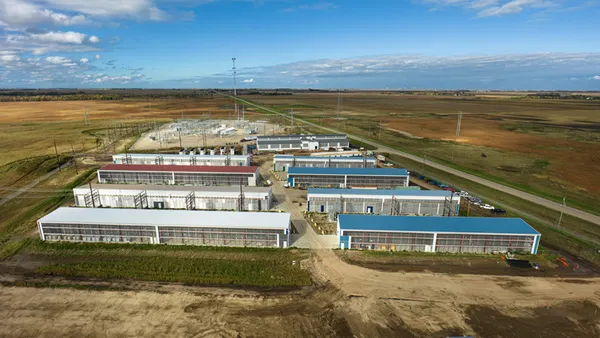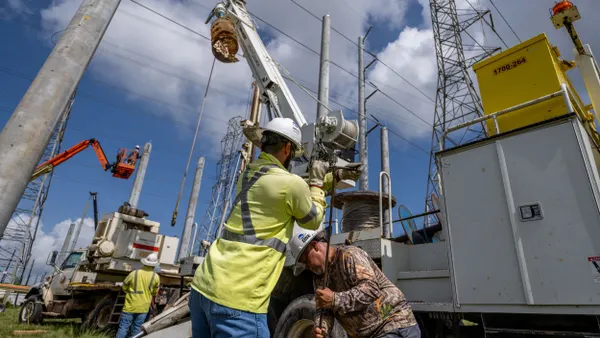Dive Brief:
- Pacific Gas & Electric has canceled 13 low-voltage transmission and distribution upgrades estimated to cost more than $190 million, following revelations that distributed energy resources and energy efficiency had negated the need for the projects, Greentech Media reports.
- Solar advocates say this is proof rooftop PV is a net-positive for homeowners and the grid at large.
- The news comes as California is beginning to consider a proposal that would create shareholder incentives for supporting distributed resources, a proceeding which could resemble the market reforms being undertaken in New York's Reforming the Energy Vision docket.
Dive Insight:
News out of California proves that distributed resources can help save consumers money and lessen the need for new grid investments, Greentech Media reports. The site examines revelations, first reported by California Energy Markets, that PG&E customers have avoided about $192 million in transmission costs in large part due to the expansion of rooftop solar.
PG&E Director of ISO Relations Eric Eisenman said at a recent California Independent System Operator (CAISO) board meeting that the utility appreciates the projects being reassessed, but "the need for those is just not there anymore."
Load forecast where the projects were planned has fallen, with efficiency and rooftop solar to credit.
“This is really proof of what we and other energy advocates have been saying for some time—that solar, along with other clean distributed energy resources, such as energy storage, electric vehicles and demand response, will mean less utility investment in infrastructure and savings for consumers,” Vote Solar's Jim Baak told GTM.
The news comes as the state is beginning to consider how it can encourage utility investments in distributed resources—a proposal that could look similar to market reforms in New York. Last month, the state approved a slate of reforms dealing with how utilities profit, including allowing utilities to make money through traditional cost-of-service investments, earnings tied to the deferment of capital investments, earnings from market-based platform activities and market-based performance measures.
In April, California Public Utilities Commission Michael Florio proposed pilot reforms that would achieve similar ends on the West Coast, examining the need for shareholder incentives.
Florio proposed an interim pilot offering regulatory incentives to the three large California investor-owned utilities for the deployment of cost-effective DERs. In some circumstances, the utility's incentives could include system level costs for the procurement of energy, capacity and ancillary services, as well as the cost of greenhouse gas emissions avoided by the choice of the distributed resources.
Under Florio's proposal, the incentive would take the form of an additional payment to the utility of 3.5% of the payments made to the DER provider. That percentage, however, could be changed later.
Florio's proposal stressed that "the offering of shareholder incentives for utility deployment of cost-effective [distributed energy resources] should not come at the expense of ratepayers." But he went on to note that as long as the amount paid to the DER provider, plus the cost of the utility incentive, is less than the cost of the avoided or deferred utility capital investment, "ratepayers should always be better off paying the incentive than if the utility had just gone ahead with the planned investment."













